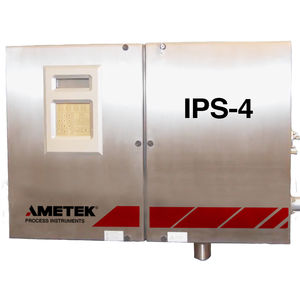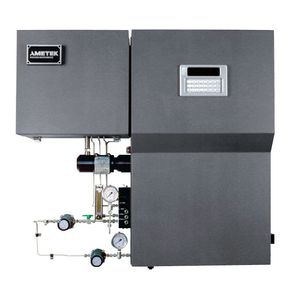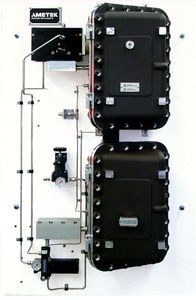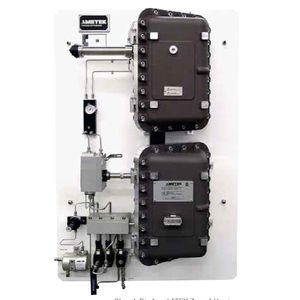
- Metrology - Laboratory
- Analytical Instrumentation
- Sulfur analyzer
- AMETEK Process Instruments
Sulfur analyzer 930 monitoringfor integrationin-line

Add to favorites
Compare this product
Characteristics
- Measured entity
- sulfur
- Application domain
- monitoring
- Configuration
- for integration, in-line
- Other characteristics
- continuous, sampling
Description
Using proven ultraviolet (UV) technology, the 930 identifies potential safety risks in sulfur storage locations through simultaneous hydrogen sulfide (H2S) and sulfur dioxide (SO2) measurements.
Capable of stable, sensitive measurements ranging from parts-per-million (ppm) to percentage levels, the analyzer offers output alarms for the lower explosive limit of H2S and smoldering fire level of SO2.
The 930 analyzer samples the vapor space gas using reliable UV technology. The sampling system has a sulfur knock-out at the probe to eliminate entry of excess sulfur vapor or liquid into the system.
Sharing a common design with the 900 (air demand) and 910/920 (stack gas) analyzers, the 930 provides simultaneous safety measurements for sulfur recovery and de-gassing in the hydrocarbon processing industry.
MINIMAL BASELINE AND SPAN DRIFT
The 930’s dual-beam configuration, combined with the reference measurement, ensures low noise performance with minimal baseline and span drift. Measurements from ppm to percent level are possible.
SIMULTANEOUS MEASUREMENTS
A multi-component UV analyzer, the 930 is configured to measure both H2S and SO2 in the sulfur pit at the same time.
ASR900 PROBE OPTION
The ASR900 advanced sulfur reduction sampling probe uses a temperature-controlled sulfur condenser, providing sulfur vapor control at the sample point. This ensures no plugging will occur in the sample lines and analyzer.
Features
• Common design with 900 and 910/920 analyzers
• ppm to percent level measurements
• Exceptional baseline stability and sensitivity
• ASR900 probe prevents sulfur plugging
Catalogs
Other AMETEK Process Instruments products
Western research
Related Searches
- AMETEK gas analyzer
- AMETEK concentration analyzer
- AMETEK monitoring analyzer
- AMETEK liquid analyzer
- Desktop analyzer
- Automated analyzer
- Dust analyzer
- AMETEK portable analyzer
- AMETEK continuous analyzer
- AMETEK process analyzer
- AMETEK integration analyzer
- Water analyser
- Real-time analyser
- AMETEK compact analyzer
- AMETEK oxygen analyzer
- Laboratory analyser
- Digital analyser
- NDIR analyzer
- In-line analyser
- Spectrophotometer
*Prices are pre-tax. They exclude delivery charges and customs duties and do not include additional charges for installation or activation options. Prices are indicative only and may vary by country, with changes to the cost of raw materials and exchange rates.



















